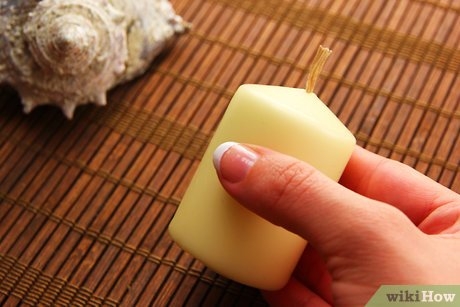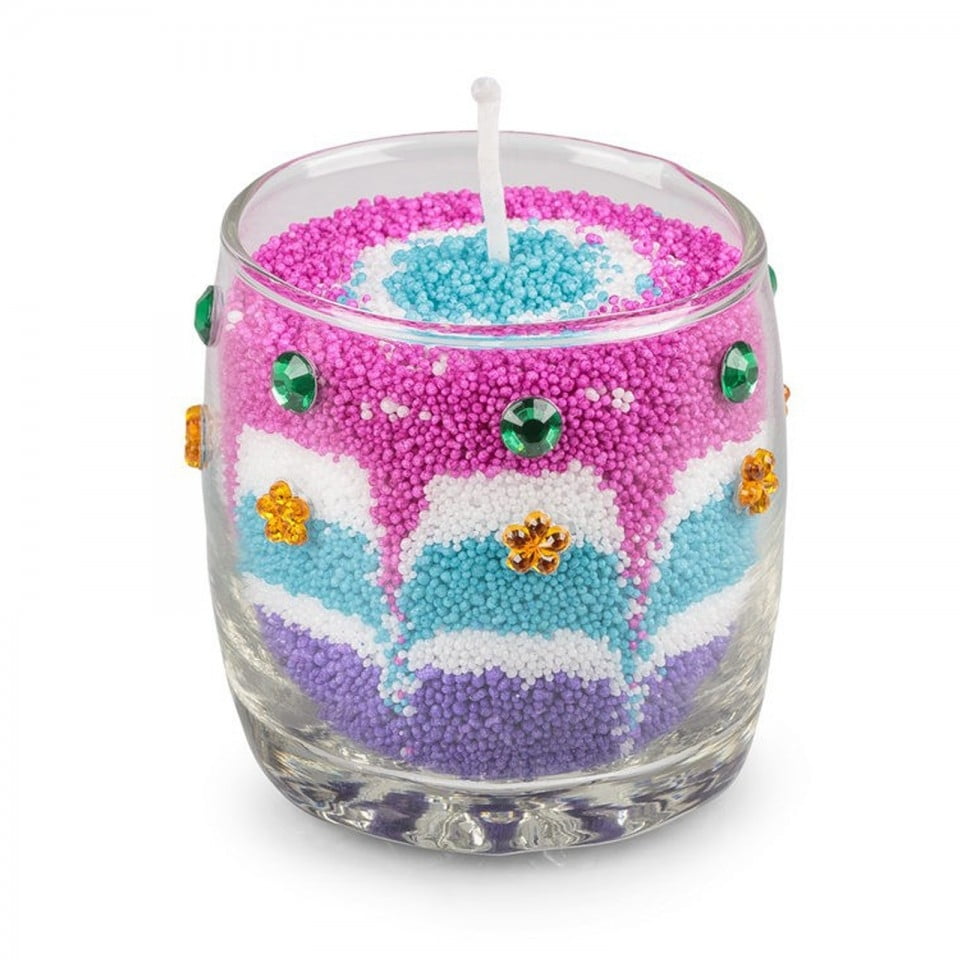Step into the enchanting world of candle making wax factories, where creativity meets craftsmanship to produce stunning candles that light up our lives. From the melting pots of wax to the meticulous pouring of molds, these factories are hubs of innovation and quality control. This article will take you on a behind-the-scenes journey into this captivating industry, exploring the intricate process of candle production.
Delve into the rich history of candle making and discover how this age-old craft has evolved over centuries. Discover how different types of wax play a crucial role in creating candles, from traditional paraffin wax to eco-friendly soy wax options. Understanding the nuances of wax selection is key to producing candles with unique textures and burn times.
Join us as we unravel the step-by-step process of making candles in a wax factory, providing a detailed guide on how these luminous creations come to life. From concept to creation, witness the artistry and precision that goes into crafting each candle. Quality control measures ensure that every candle produced meets high standards, ensuring customer satisfaction with every purchase. Stay tuned for an insightful exploration into sustainability practices and emerging trends in the dynamic world of candle making.
History of Candle Making
Candle making has been a practice that dates back thousands of years, with its origins rooted in ancient civilizations. The earliest evidence of candle use can be traced back to the Egyptians, who used rushlights or torches made from reeds soaked in animal fat. These ancient candles were primarily used for illumination purposes rather than decorative or aromatic reasons.
As civilizations advanced, so did the methods of candle making. The Romans are credited with creating the first true dip candles by dipping pithy reeds repeatedly into melted tallow or beeswax. This technique improved the quality and burn time of candles, making them more accessible to a wider population. Throughout history, different cultures developed their own unique techniques and materials for candle making, each influencing the evolution of the craft.
The Middle Ages saw the emergence of chandlers – individuals skilled in candle making – who played a significant role in producing candles for religious ceremonies, domestic use, and lighting. Tallow, derived from animal fats like beef or sheep, was commonly used as the primary wax material.
As society progressed into the modern era, advancements in technology and industrialization revolutionized candle production methods. The introduction of paraffin wax in the 19th century marked a significant milestone in the history of candle making, providing a more affordable and readily available alternative to traditional beeswax and tallow.
Types of Wax Used in Candle Making
When it comes to candle making, the type of wax used plays a crucial role in determining the quality and characteristics of the final product. There are several options available in the market for creating candles, each with its own set of benefits and considerations. Here is an in-depth analysis of some common types of wax used in candle making:
- Paraffin Wax: Paraffin wax is one of the most traditional and widely used waxes in candle making. It is known for its excellent scent throw and ability to hold color well. However, it is derived from petroleum, which may not be appealing to environmentally conscious consumers.
- Soy Wax: Soy wax is a popular choice among eco-friendly candle makers due to its renewable source – soybeans. It burns cleanly and slowly, resulting in a longer-lasting candle with a minimal soot production. Soy wax also has good scent throw capabilities.
- Beeswax: Beeswax is a natural wax produced by honeybees. It has a sweet, honey-like fragrance and burns longer than other waxes. Beeswax candles are known for their bright flame and air-purifying properties.
In addition to these commonly used waxes, there are also specialty waxes such as palm wax, coconut wax, and rapeseed wax that cater to specific preferences in terms of aesthetics, burn time, and scent diffusion. Candle makers often experiment with different wax blends to achieve unique qualities in their candles. Understanding the characteristics of each type of wax is essential for creating candles that meet the desired specifications.
- Understanding the differences between waxes helps candle makers choose the right type for their specific needs.
- Some waxes may require different pouring temperatures or additives for optimal results.
- Exploring new and alternative wax options can lead to innovative candle creations that stand out in the market.
Whether you prefer traditional paraffin candles or are drawn to sustainable soy options, the selection of wax ultimately shapes the overall experience of burning a candle. The versatility offered by various types of wax allows for endless possibilities in creating beautiful candles that not only illuminate spaces but also evoke emotions through their scents and visuals.
The next time you light a candle, take a moment to appreciate the intricate craftsmanship that goes into selecting the perfect wax for that moment of warmth and ambiance.
The Process of Making Candles
One of the crucial aspects of candle production in a wax factory is understanding the meticulous process involved in creating these beloved household items. The journey from melting wax to pouring molds requires precision, attention to detail, and expert craftsmanship.
The first step in making candles at a wax factory is selecting the appropriate type of wax for the desired end product. Different waxes, such as paraffin, soy, beeswax, and palm, offer unique characteristics that impact the candle’s appearance, burn time, and fragrance throw. Once the ideal wax is chosen, it undergoes a melting process where it is heated to specific temperatures to achieve the right consistency for pouring.
After the wax is melted and prepared, various additives like color dyes and scents are incorporated to enhance the aesthetic and olfactory appeal of the candles. Depending on the design of the candle being produced, molds or containers are filled with the molten wax mixture carefully. As the candles cool and solidify, quality control checks are conducted to ensure they meet industry standards before being packaged and shipped to consumers.
| Wax Type | Characteristics |
|---|---|
| Paraffin | Most commonly used for its excellent scent throw |
| Soy | Eco-friendly option with a cleaner burn compared to paraffin |
| Beeswax | Natural ingredient known for its air-purifying properties when burned |
| Palm | Sustainable alternative sourced from palm oil with a creamy texture |
Quality Control in Candle Production
Quality control is a crucial aspect of candle production in a wax factory, ensuring that the final products meet high standards of quality and safety. By implementing stringent quality control measures, manufacturers can guarantee that their candles burn evenly, have consistent fragrances, and meet customer expectations. One of the key elements of quality control in candle production is testing the raw materials, including the wax itself, wicks, fragrances, and dyes for purity and compatibility.
In addition to raw material testing, quality control in candle production also involves monitoring the manufacturing process at every stage. This includes checking the temperature of the wax during melting, ensuring proper pouring techniques to avoid air bubbles or uneven surfaces, and conducting burn tests to evaluate the candle’s performance. By maintaining strict quality control standards throughout the production process, candle making wax factories can minimize defects and produce candles that are safe and reliable for consumers to use.
Quality control measures in candle production not only benefit consumers by providing them with premium products but also help manufacturers build a strong reputation for excellence in the market. By investing in quality assurance processes and continuous improvement initiatives, candle making wax factories can differentiate themselves from competitors and earn customer trust and loyalty. As the demand for high-quality candles continues to grow, adherence to rigorous quality control standards will be essential for success in the competitive candle industry.
| Quality Control Measures | Benefits |
|---|---|
| Testing raw materials for purity | Ensuring candles meet safety standards |
| Monitoring manufacturing process | Minimizing defects and inconsistencies |
| Building reputation for excellence | Earning customer trust and loyalty |
Sustainability in Candle Making
Candle making is an ancient craft that has evolved over the years, not only in terms of design and fragrance but also when it comes to sustainability. With growing concern for the environment, many candle makers are now implementing eco-friendly practices and sustainable approaches in their manufacturing process. Here are some of the ways in which modern candle making wax factories are prioritizing sustainability:
- Use of Natural Wax: One key factor in sustainable candle making is the use of natural waxes such as soy wax, coconut wax, or beeswax. These waxes are renewable resources that are biodegradable and produce less soot when burned compared to paraffin wax.
- Recycling and Upcycling: Many candle making wax factories are adopting recycling and upcycling practices to minimize waste. This includes repurposing old candles or using recycled materials for packaging.
- Energy-Efficient Production: To reduce carbon footprint, some manufacturers are investing in energy-efficient machinery and processes. This not only helps lower energy consumption but also reduces greenhouse gas emissions during production.
By incorporating these eco-friendly practices into their operations, candle making wax factories are not only contributing to a healthier planet but also meeting the growing demand from consumers who prioritize sustainability. The shift towards environmentally friendly practices is a positive step towards ensuring that the art of candle making continues to thrive while minimizing its impact on the environment.
Trends in Candle Making
In the ever-evolving world of candle making, staying updated on the latest trends and innovations is crucial for businesses to stay competitive and meet consumer demands. From scents to shapes, the candle industry is constantly seeing new ideas and products emerge that capture the interest of candle enthusiasts worldwide.
Customization and Personalization
One of the major trends in candle making is customization and personalization. Consumers are increasingly seeking unique and bespoke candles that reflect their individual taste and style. This trend has led to a rise in personalized candles with custom scents, labels, and even shapes tailored to specific preferences. Candle makers are offering design-your-own candle workshops where customers can create their own one-of-a-kind pieces.
Eco-Friendly Practices
With growing awareness of environmental issues, sustainability has become a key focus in the candle making industry. More consumers are looking for eco-friendly candles made from natural waxes like soy or beeswax, as well as organic essential oils for scents. Candle makers are also adopting sustainable packaging materials and recycling programs to reduce their carbon footprint. The shift towards eco-conscious practices is not only good for the planet but also resonates with environmentally conscious consumers.
Tech-Infused Candles
Another exciting trend in candle making is the integration of technology into traditional products. LED candles that mimic real flames, Bluetooth-connected smart candles that can be controlled via mobile apps, and even glow-in-the-dark candles are gaining popularity among tech-savvy consumers.
These innovative products add a modern twist to traditional candle making techniques, appealing to a new generation of buyers looking for unique experiences. Incorporating technology into candle production opens up endless possibilities for creativity and experimentation in creating cutting-edge products.
As trends continue to evolve in the candle making industry, businesses must adapt and innovate to meet changing consumer preferences while maintaining high-quality standards in their products. By embracing these latest trends ranging from customization to sustainability and tech-infused creations, candle makers can stay ahead of the curve and continue captivating audiences with their innovative offerings.
Visiting a Candle Making Wax Factory
Nestled in the heart of a bustling industrial district, a candle making wax factory stands tall, emitting a warm glow that beckons visitors to explore its intriguing world of production. Upon entering the factory, one is immediately surrounded by the sweet scent of melting wax and the hum of machinery in motion. The atmosphere is a harmonious blend of innovation and tradition, where ancient techniques meet modern technology to create exquisite candles that delight consumers worldwide.
The first stop on the virtual tour is the melting room, where large vats of different types of wax are heated to precise temperatures. Here, workers carefully monitor the melting process to ensure that the wax reaches the perfect consistency for pouring into molds. The variety of waxes used in candle making – from paraffin to soy to beeswax – adds depth and complexity to the production process, allowing for a diverse range of candles to be crafted to perfection.
Moving along on our tour, visitors are treated to a glimpse of the molding section, where skilled artisans pour molten wax into intricate molds that shape the candles into their final forms. The rhythmic clinking of molds being filled with liquid wax is mesmerizing, highlighting the meticulous nature of candle making.
Each mold is designed with precision and care, resulting in unique candles that capture both aesthetic beauty and functional excellence. As visitors observe this step in the production process, they gain newfound appreciation for the artistry involved in creating every candle that leaves the factory floor.
Conclusion
In conclusion, the world of candle making wax factories is a blend of tradition, innovation, and creativity. From the historical roots of candle production to the modern-day sustainable practices, this industry continues to evolve and thrive. The various types of wax used in candle making offer endless possibilities for creating unique and high-quality candles that cater to diverse consumer preferences.
Quality control measures play a crucial role in ensuring that each candle produced meets the highest standards before reaching the market. This dedication to excellence not only guarantees customer satisfaction but also upholds the reputation of candle making wax factories as providers of premium products. Additionally, with a growing emphasis on sustainability, many manufacturers are adopting eco-friendly practices to reduce their environmental impact and meet the demands of conscientious consumers.
As trends in candle making continue to shift and new innovations emerge, one thing remains constant: the essential role that candle making wax factories play in shaping the market. These facilities serve as hubs of creativity and craftsmanship, where skilled artisans use their expertise to craft beautiful candles that enhance our surroundings and create ambiance.
Visiting a real-life candle making wax factory offers a glimpse into this enchanting world, showcasing the intricate processes and machinery involved in bringing candles from concept to reality.
Frequently Asked Questions
Is Candle Making Profitable?
Candle making can be profitable depending on various factors such as costs of materials, overhead expenses, pricing strategy, and demand for your products. With a good business plan and marketing efforts, it’s possible to make a profit.
How Many Candles Does 1lb of Wax Make?
One pound of wax typically makes around four 8 oz candles. The exact number can vary based on the size of the candles you are making, the type of wax used, and any additional additives like fragrance or color.
How Many Candles Does 5lbs of Wax Make?
Five pounds of wax can potentially make around 20 to 25 candles, assuming each candle is 8 oz in size. Again, actual yield may vary depending on several factors like the specific type of wax being used and any additional elements incorporated into the candles.

Welcome to my candle making blog! In this blog, I will be sharing my tips and tricks for making candles. I will also be sharing some of my favorite recipes.





